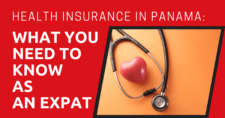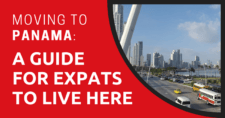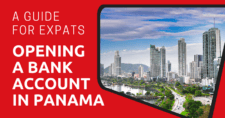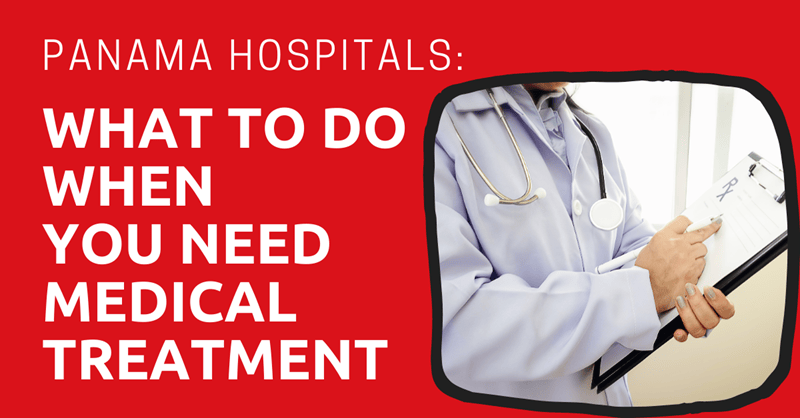
One of the main issues expats worry about when they move to a new country is how they’re going to find high-quality and affordable medical care. Fortunately, Panama has you covered on both fronts.
Panama boasts a handful of quality hospitals that offer the latest treatments and procedures, advanced technology, comfortable amenities, and English-speaking doctors.
Even in the country’s top hospitals, you can receive care that’s up to 75% less expensive than in high-cost healthcare nations like the United States.
Plus, Panama is so small that no matter where you are in the country, you’d never need to drive more than a couple hours to reach a hospital.
Lots of expats – including me – tell stories about their positive experiences with Panamanian hospitals. We like the short wait times, low cost, and friendly care from doctors and nurses.
This article is a guide to hospitals in Panama.You will learn about public and private facilities, the nation’s top hospitals, waiting times and costs, scheduling appointments, the hospital experience, health insurance options, and more.
This article will take approximately 17 minutes to read. Don't have the time right now? No worries. You can email the ad-free version of the article to yourself and read it later!
Disclaimer: This article may include links to products or services offered by ExpatDen’s partners, which give us commissions when you click on them. Although this may influence how they appear in the text, we only recommend solutions that we would use in your situation. Read more in our Advertising Disclosure.
Contents
Key Takeaways
- Hospitals in Panama are known for being affordable while providing a good quality of care.
- Since Panama is quite small, you can access a good level of care no matter where you live.
- Still, public hospitals in Panama suffer from problems with long waiting times and a lack of medical doctors.
- Expats prefer visiting a private hospital. While it’s more expensive than public hospitals, it’s still much cheaper than in other nearby countries such as the United States.
- Hospital Punta Pacífica and Hospital San Fernando are two popular options for expats in Panama.
Types of Hospitals in Panama
The Panamanian healthcare system is divided into public and private sectors.
Here’s an overview of the two systems.
Public Hospitals
Panamanian public hospitals are run by the government’s Ministry of Health (MINSA) and Caja de Seguro Social (Social Security).
Together these two government bodies are in charge of about 30 hospitals nationwide.
The largest and most well-known public hospitals include:
- Hospital Santo Tomás and Hospital del Niño in Panama City
- Hospital Regional de Chiriquí in David
- Hospital Regional Anita Moreno in Los Santos
- Hospital Gustavo Nelson Collado in Chitré.
Public hospital hours are usually 6 a.m. to 3 p.m. for non-emergency care. The emergency room (sala de urgencias in Spanish) is open 24 hours, 7 days a week.
Public hospitals offer a wide range of services, such as cardiology, geriatrics, endocrinology, neurology, gynecology and obstetrics, general medicine, X-rays, diagnostic tests, and surgeries.
These procedures are very cheap, which is why some expats in Panama choose to receive medical attention at public facilities and pay out of pocket.
Just keep in mind that due to the affordability of government hospitals, lines can be quite long.
The solution is to arrive early, ideally when the facility opens, to avoid a long wait.
Private Hospitals
Panama’s private healthcare system stands out as one of the best in Latin America.
Its hospitals are modern and equipped with advanced technology, offering the latest treatments. Many doctors in these facilities have studied medicine in the United States and speak English.
In Panama City, two private hospitals have earned recognition from the Joint Commission International for their high-quality medical care.
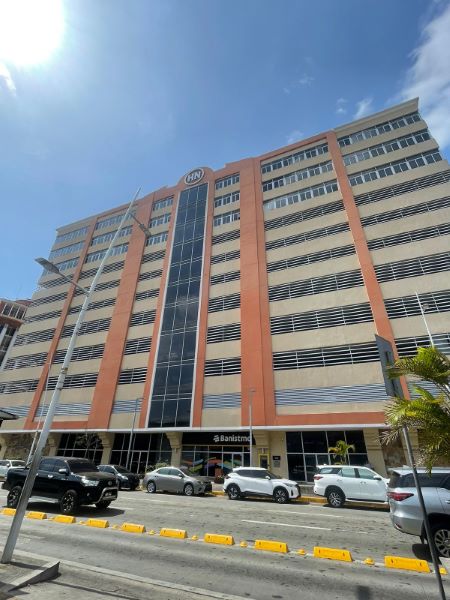
Hospital Punta Pacífica and Hospital San Fernando are preferred choices for expats due to their excellent, personalized service.
Panama’s private hospitals are increasingly attracting international attention, leading to a rise in medical tourism. People from high-cost healthcare countries are drawn to Panama for its expert care at lower prices.
Private hospitals in Panama provide amenities like private rooms, air conditioning, and short (sometimes zero) wait times.
Expats often report that the level of care they receive here is equal to or better than that in their home country.
Best Hospitals In Panama
The best hospitals in Panama are the following:
- Hospital Punta Pacífica (Panama City)
- The Panama Clinic (Panama City)
- Hospital Paitilla (Panama City)
- Hospital San Fernando (Panama City)
- Centro Médico Mae Lewis (David)
Let’s take a look at each one and the reasons why it’s a top choice for expats in Panama.
Hospital Punta Pacífica
Hospital Punta Pacífica is located in the Punta Pacífica neighborhood of Panama City, which is an expat favorite. Hospital Punta Pacífica has an agreement with Johns Hopkins University in the United States and ranks as one of the top-ten hospitals in Latin America.
Hospital Punta Pacífica provides excellent care in many departments, including urology, cardiology, orthopedics, physical therapy, gastroenterology, endoscopy, neurology, dermatology, gynecology and obstetrics, nephrology, endocrinology,
pediatrics, and more. There’s also a 24-hour emergency room.
The hospital boasts innovative cardiovascular and robotic surgery centers.
Many doctors who work in the hospital were trained at Johns Hopkins and speak fluent English. Hospital Punta Pacífica is the top hospital in Panama, making it the number-one choice for many expats.
Hospital Paitilla
Hospital Paitilla is found in the upscale Paitilla neighborhood – another expat-popular zone and a highly accessible area.
This is another excellent facility with cardiology, plastic surgery, dermatology, endocrinology, speech therapy, gastroenterology, geriatrics, gynecology and obstetrics, hematology, psychology and psychiatry, pediatrics, rheumatology, neurology, and many other departments.
In Hospital Punta Pacífica and Hospital Paitilla you’ll receive top-notch care and be attended by English-speaking medical professionals.
Both facilities offer internal medicine, emergency care, general surgery, and specialized surgery, like brain and heart operations.
The Panama Clinic
The Panama Clinic is a new private hospital in Punta Pacífica and is part of the Pacific Center campus, where you’ll also find a shopping mall, Marriott Residence Inn hotel, and doctor’s offices. It was designed based upon U.S. and European standards and features advanced procedures like robotic surgery.
Services offered at this facility include a 24-hour emergency room, radiology and laboratory, maternity, pharmacy, surgery, hospitalization and intensive care, medical tourism, and preoperative care.
The Panama Clinic also features a urology institute, eye surgery institute, physical and rehabilitative medicine clinic, and robotic surgery institute.
The Panama Clinic has won awards for excellence in medical tourism and quality in medical care.
Hospital San Fernando
Hospital San Fernando is the oldest hospital in this list, dating back to 1949. This facility is located on the Vía España in Panama City. San Fernando also operates a smaller hospital-clinic in the Coronado beach community.
The Panama City branch operates urology and cardiovascular centers, a sleep clinic, and an institute dedicated to pneumology and allergy studies. Additionally, the hospital has a pharmacy, 24-hour emergency room, and a selection of walk-in services like lab tests, radiology, ambulatory surgery, and hemodialysis.
Hospital San Fernando offers various departments, such as rheumatology, psychology and psychiatry, ear/nose/throat services, orthopedics, pediatrics, maternity, cancer treatments, nutrition, ophthalmology, neurophysiology, general medicine, rehabilitative medicine, surgeries, and much more.
With English-speaking staff and an English version of the website, Hospital San Fernando is convenient for English-speaking expats.
Centro Médico Mae Lewis
David, the second-largest city in Panama, features another top Panamanian hospital.
Centro Médico Mae Lewis is the go-to medical facility for expats living in Chiriquí province.
Centro Médico Mae Lewis’ numerous departments include cardiology, family medicine, general surgery, neurosurgery, adult and pediatric allergology, laparoscopic surgery, plastic surgery, odontology, pathology, traumatology, peripheral vascular surgery, ophthalmology, gynecology and obstetrics, geriatrics, and many others.
You can also count on 24-hour emergency, pharmacy, and laboratory services. Expats report that many doctors and nurses at Centro Médico Mae Lewis speak English.
Hospital Costs
The cost of a hospital visit depends on whether it’s a public or private facility, the specific procedure or treatment you receive, and how much time you spend there.
At a public hospital like Hospital Santo Tomás, a consultation with a specialist costs US$5 and hospitalization runs US$100 per day.
Specialists at private hospitals charge about US$50 to US$80 per appointment, and an emergency room visit costs US$25 to US$50 per hour (not including treatment.) A stay at a private hospital can be US$1,000 a day.
Private hospitals, while more expensive than public ones, can be as much as 50% to 75% less expensive than facilities in the United States.
Waiting Times
Waiting times differ significantly between public and private hospitals.
One of the biggest advantages of private hospitals is their short waiting times. If you show up in the emergency room of a private hospital you won’t be kept waiting for more than a few minutes.
Sometimes you can even be seen immediately with no wait time at all.
The same is true for booking an appointment with a private specialist.
Most of the time, these doctors can work you into their schedule within a few days. Many give patients their WhatsApp numbers so they can ask questions or reach the doctor in an instant.
Public hospitals receive more patients and thus have longer wait times. The exact wait time will depend on the time of day, as lines get longer later in the day, but it can be anywhere from less than an hour to a few hours.
If you have a serious emergency, you’ll be categorized as a high-priority patient and they’ll get you in faster.
Wait times for procedures like surgeries are generally a few weeks.
How to Visit a Hospital in Panama
This step-by-step guide tells you everything you need to know for your first visit to a Panamanian hospital.
If you don’t want to visit a hospital, another option is to buy medications from a pharmacy.
Searching for a Hospital
If you have a health condition or anticipate needing regular medical care, you’d do well to base yourself near cities like Panama City, Santiago, Chitré, or David, because these urban centers are home to large hospitals where you can receive good medical care. The good news is that most expats live within an hour or two of those places.
It can be difficult to find reliable healthcare in rural Panama.
Most small towns only have one or two government-run clinics that are able to handle only the most basic of procedures, like stitching a finger. For any major health concern, you’ll be referred to a larger hospital.
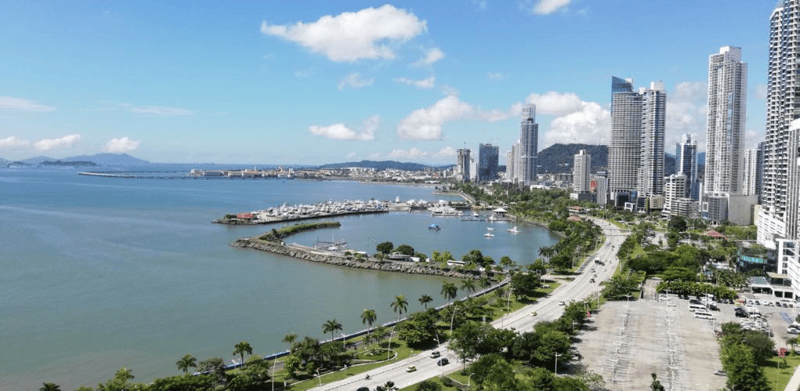
You can search for public hospitals and find one where you live using the Ministry of Health’s convenient facility locator map. The tool will also show you each hospital’s opening hours and available services.
To find a private hospital, you can do a Google search for private hospitals in the city or town you’d like to live in.
Private hospitals have in-depth websites that list the services and departments they offer, the insurance companies they partner with, and the specialists who work in the facility.
Making an Appointment
Panamanian hospitals accept walk-ins and booking an appointment usually isn’t required.
Public hospitals don’t schedule visits in advance; appointments are given in-person. If you want to see a general doctor or specialist at a public hospital, you should arrive as early as possible, ideally when the facility opens.
When you register at the external consultation (consulta externa) window, you will be registered for an appointment later in the day.
Then you’ll need to stay in the waiting room until your name is called.
In non-emergency situations, scheduling an appointment ahead of time at a private hospital is a smart move. This enables you to select your preferred doctor and skip the wait.
Simply visit the hospital’s website to access the directory and book an appointment online with the specialist of your choosing.
Alternatively, if you have any questions before making an appointment, you can reach out to the doctor via phone or WhatsApp – their contact details are available in the directory.
Registering as a Patient
When you go to a Panamanian hospital – public or private – you will need to first check-in at the registration desk. The receptionist will ask to see your passport, so it’s essential that you take it with you anytime you go to a medical facility.
If it’s a private hospital, the receptionist will ask if you have private health insurance. If you do, you’ll either show the physical card or send the digital version by email.
Once you’ve finished registering, you’ll be asked to sit in the waiting room until your name is called.
Seeing a Doctor or Specialist
When it’s time for you to be seen, a nurse will come to collect you.
They will take your vital signs, confirm your personal information, and ask about your symptoms.
Usually, in Panama, you’ll be seen first by a general practitioner who will diagnose your symptoms and send you to the relevant department if needed.
The GP will also ask what medications you’re taking, if you have allergies, and your prior medical history.
If you have a common health problem like an ear infection, upset stomach, or sore throat, the GP will likely be equipped to treat you themselves. They’ll examine you, run diagnostic tests, and recommend medication.
In the case of a more complex condition or accident, the GP will send you to a specialist.
Hospitalization
Private hospitals provide individual rooms for patients who need to stay overnight.
Hospitalization in one of these facilities is a very similar experience to hospitalization in the United States and Canada. You can count on air conditioning, warm water, and bed linens.
Public hospitals don’t have private rooms. If you need to spend the night in a government hospital, you’ll likely share a room with a few other patients. Air conditioning and bed linens are sometimes available.
Some private insurance plans offer coverage for overnight hospital stays while others do not. Hospitalization coverage is an important factor to evaluate when considering health insurance policies.
Paying Bills
Before you can leave a Panamanian hospital, you have to pay your medical bill in full. Hospitals accept cash, credit and debit cards, and Yappy (an instant transfer app from Banco General bank.)
Paying With Health Insurance
Both public and private health insurance systems exist in Panama.
Employees of Panamanian companies are automatically enrolled in Social Security. This program offers workers health insurance that is accepted at public hospitals within the Social Security network.
Social Security health insurance provides 100% coverage for consultations, emergencies, hospitalization, preventative medicine, exams, surgeries, and any other service offered by each hospital.
Panamanian private health insurance plans cost US$50 to US$400 per month, depending on your age and plan. Please read our health insurance in Panama article to find out more.
Before heading to a private hospital, check its affiliated insurance providers to ensure yours is on the list. If your insurance company is a partner and your treatment is covered, you’ll simply fill out some paperwork and won’t have to pay anything.
If your insurance company isn’t affiliated, you’ll have to pay out-of-pocket. However, some providers issue refunds for out-of-network care, so keep your receipts.
Local private health insurance plans operate on either a deductible or co-pay system (or a combination of the two).
For instance, my plan with Pan-American Life costs US$62 a month with no deductible.
This means I pay a small co-pay for each medical visit. Recently, I had an allergic reaction and went to the private Hospital Brisas in Panama City. I spent a couple of hours in the emergency room and received a cocktail of anti-anaphylactic medications.
My total payment for the appointment? US$25. Without health insurance, I would have paid over US$300.
And my experience? Highly recommended. I was seen immediately by a doctor, the hospital staff was friendly and kind, and I was provided with a comfortable bed surrounded by a curtain in an air-conditioned emergency room. I was discharged as soon as I felt better – no unnecessary waiting.
Do I Need to Speak Spanish?
At private hospitals, you can usually count on finding English-speaking doctors and nurses.
However, lthe likelihood of this at public hospitals is lower. It’s always wise to be prepared for any situation, so I’m leaving you with a list of Spanish words and phrases that will be helpful for navigating Panamanian hospitals.
Parts of the Body = Las Partes Del Cuerpo
Head = la cabeza
Brain = el cerebro
Eye = el ojo
Outer ear = la oreja
Inner ear = el oído
Nose = la nariz
Mouth = la boca
Throat = la garganta
Heart = el corazón
Stomach = el estómago
Lungs = los pulmones
Ribs = las costillas
Bone = el hueso
Arm = el brazo
Hand = la mano
Back = la espalda
Leg = la pierna
Knee = la rodilla
Foot = el pie
Blood = la sangre
Symptoms = Los Síntomas
Fever = la fiebre
Cough = la tos
Pain = el dolor
Headache = dolor de cabeza
Sore throat = dolor de garganta
Stomachache = dolor de estómago
Stuffy nose = la nariz tapada
Difficulty breathing = dificultad para respirar
High blood pressure = la presión alta
Low blood pressure = la presión baja
Dizziness = el mareo
Vomit = el vómito
Illnesses = Las Enfermedades
Infection = la infección
Cold = el resfrío
Flu = la gripe
Bone fracture = la fractura de hueso
Diabetes = la diabetes
Heatstroke = la insolación
Wound = la herida
Allergic reaction = la reacción alérgica
Other Medical Terms
Medicine = la medicina
X-ray = el rayo X
Surgery = la cirugía
Injection = la inyección
Tests = los exámenes
Emergency room = la sala de emergencias
Clinic = la clínica
Hospital = el hospital
Ambulance = la ambulancia
Medical insurance = el seguro médico
Doctor = el doctor/la doctora/el médico/la médica
Nurse = el enfermero/la enfermera
Helpful Phrases
I don’t feel well = no me siento bien
I feel sick = me siento enfermo/enferma
I had an accident = tuve un accidente
My head/throat/etc. hurts = me duele la cabeza/la garganta/etc.
Where does it hurt you? = ¿Dónde te duele?
What symptoms do you have? = ¿Qué síntomas tienes?
Is there a doctor who speaks English? = ¿Hay un doctor/una doctora que hable inglés?



